Editor’s Note: This post is written by a member of LTV’s sponsored content team, The Leisure Explorers. Do you own a Leisure Travel Van and enjoy writing? Learn more about joining the team.
The West, Part 1
Yes, the “West” is a big place to fish and a big area to cover, whatever the subject. That’s why, with snow already falling in parts of western North America, as I write this in late September, I’m dividing my fishing recommendations into two parts, based mostly on personal experience. The second will also feature some Western Canada locations.
My first Top 10 list on the Midwest included everything from Great Lakes ports famous for salmon and steelhead to streams. So I’m focusing on 10 spots each, and maybe a few more, which, in my opinion, are can’t-miss bucket list locations to visit in your Leisure Travel Van.
Spring Creeks
A word about Spring Creeks: they can be one of the most rewarding fishing experiences you’ll ever have or one of the most frustrating. Prolific mayfly hatches, extremely finicky trout, and instant lessons in improving your techniques, from wading to casting, await you in fishing these rivers that spring from springs ranging from 48 to 55 degrees Fahrenheit. Some are small, others pretty big. But, if you learn from them, you’ll get a Ph.D. in fly fishing techniques and casting. Ignore my rules, and you’ll be choosing frustration. Patience, grasshopper, indeed. Even when using grasshopper imitations. Here are my rules for Spring Creek fishing:
- Wade slowly, stealthily. Fish can feel you. No tromping allowed, or you’ll never see a fish.
- Use a fine tippet. For newbies, that’s the last segment of your leader. 6X (.005 inch diameter) or 7x (.004), except when fishing bigger flies, is an absolute must.
- Patience, patience. Don’t muddle in the water chasing after each fish. Find one, and watch it. Slowly approach and watch it. Watch the water for flies. Some fish will go after male mayflies and switch to female. Yes, really. One fish will feed on one fly species, and another a few feet away may feed on another. After you land and release that one, do the same with another. Patience.
- When you do hook a fish, play it gently. Wet your hands before touching so its natural protective film stays with the fish, not on you.
With that primer, here we go.
Silver Creek Preserve, Picabo, Idaho

The town that U.S. Olympic gold medalist Picabo Street was named for (she named herself, said her parents) holds a resource treasure that comes bubbling up from an aquifer fed by the nearby Wood River: Silver Creek, about 20 miles south of the Sun Valley area. Ernest Hemingway canoed and fished here. Hemingway’s grave—he took his own life—is nearby Ketchum, and a monument to him is streamside here.
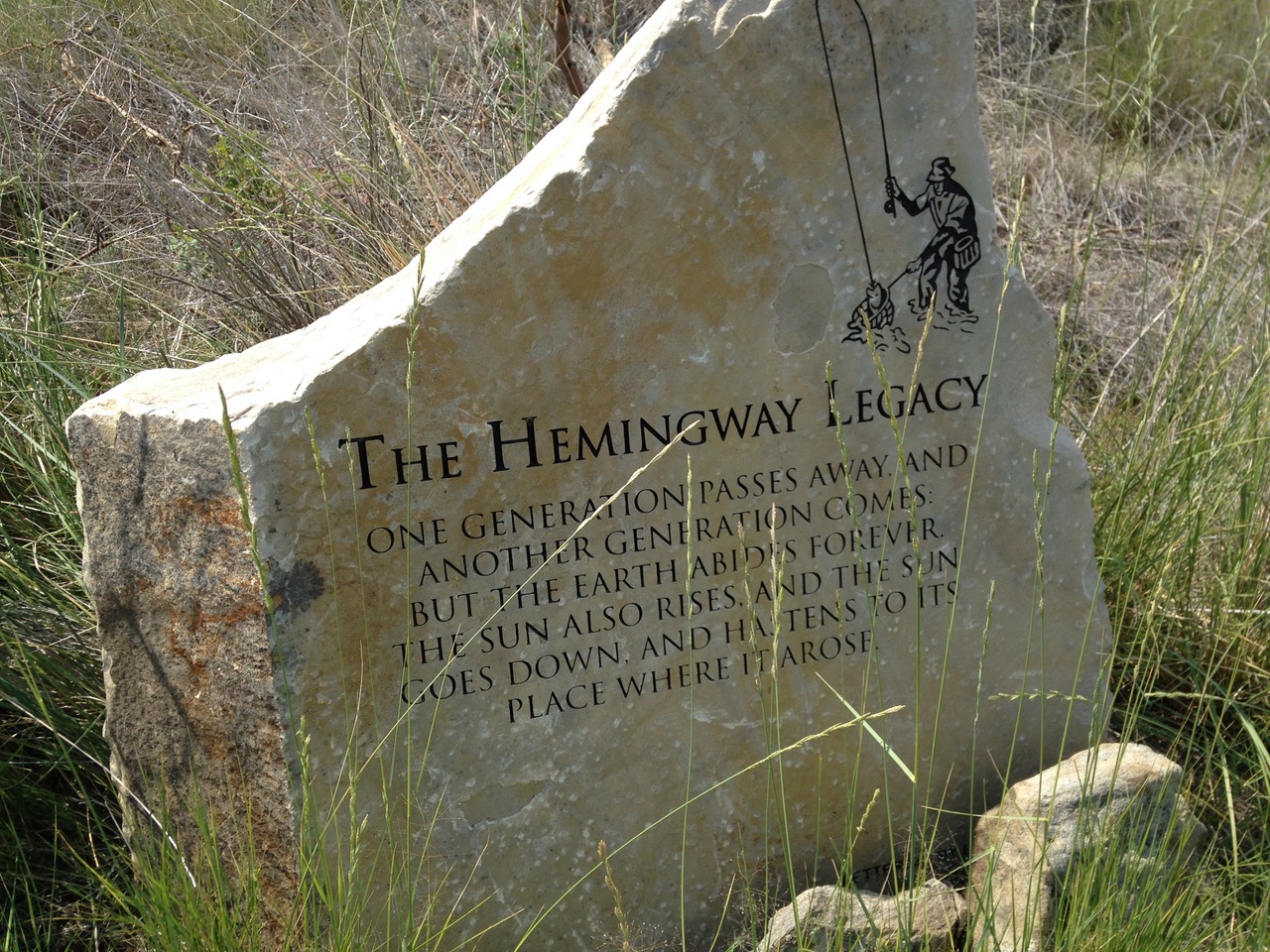
In the 1970s, Jack Hemingway, Papa’s son, who was then on the state’s natural resources commission, convinced legendary ranch owner Bud Purdy to sell 300 acres of the creek to one of the world’s best-known conservation groups, The Nature Conservancy. Today, it oversees 12,000 acres. The river again is filled with giant brown and rainbow trout. Small ones, too. Its reputation brings anglers from around the globe. Many come for the legendary and tiny “trico mayfly hatch”—some call them tiny white-winged black flies—that are so prolific they form clouds over the creek each July and August morning. Trout love them.
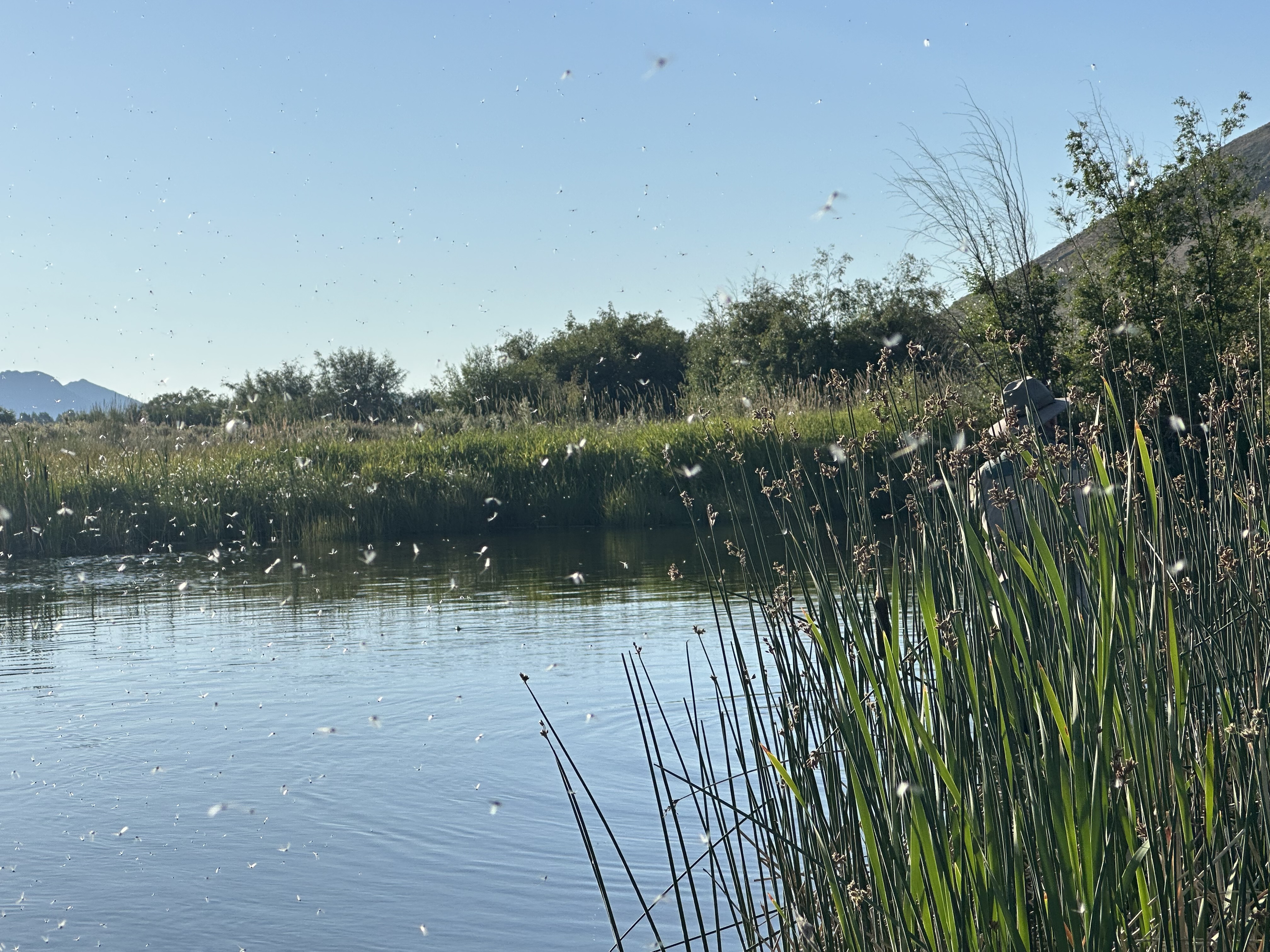
The upper creek varies from ankle to chest deep. Lower reaches are for float tube fishing only. But trout up to 32 inches have been fooled by the tiny hook size 20-24 imitations that most use. There are other hatches on the river, including larger brown drakes and large damsel flies, which anglers imitate with patterns to lure larger fish looking for a larger meal.
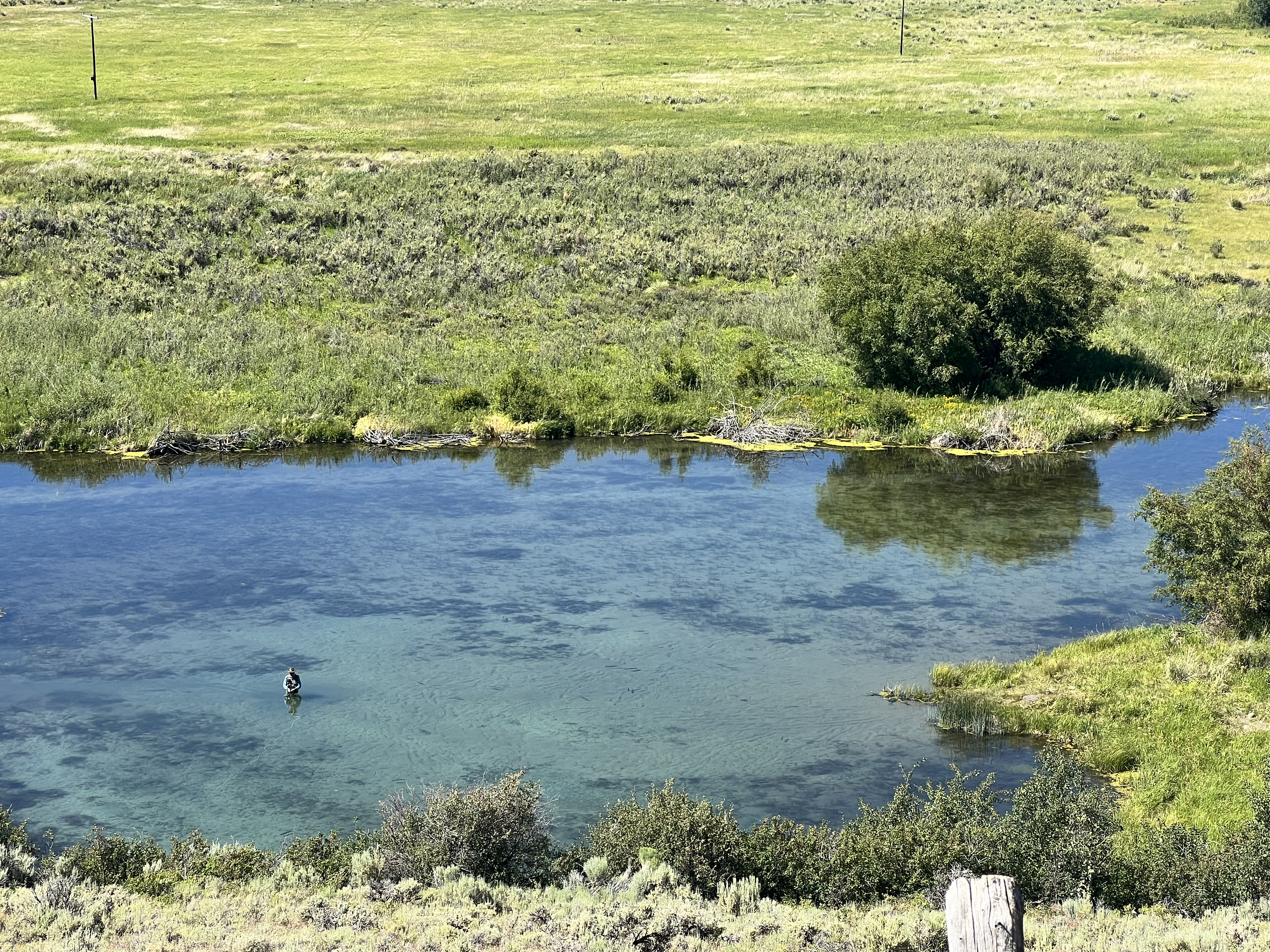
The Conservancy’s hillside conservation and education visitor center provides maps of trails that lead to easy-to-enter access ramps that help prevent erosion. Not an angler? Drive up the hill from the center to see a large patch of lighter river bottom–the Shark Tank. Watch as huge browns and rainbows get tickled by the underwater spring heads, and anglers try for them. Or, go birding. The preserve also hosts a multitude of moose and other high-country critters. No bears, though.

Fishing is free, but you must sign in online or in person. Idaho fishing laws also apply, as well as those from the Conservancy. For more information, including more for your visit, go here. You may even see Denise and me at the visitor center working as volunteers. For fishing information and flies, go to the Picabo store/gas station/post office/restaurant/fly shop. They also have a guide service. More guide shops are north in Ketchum.
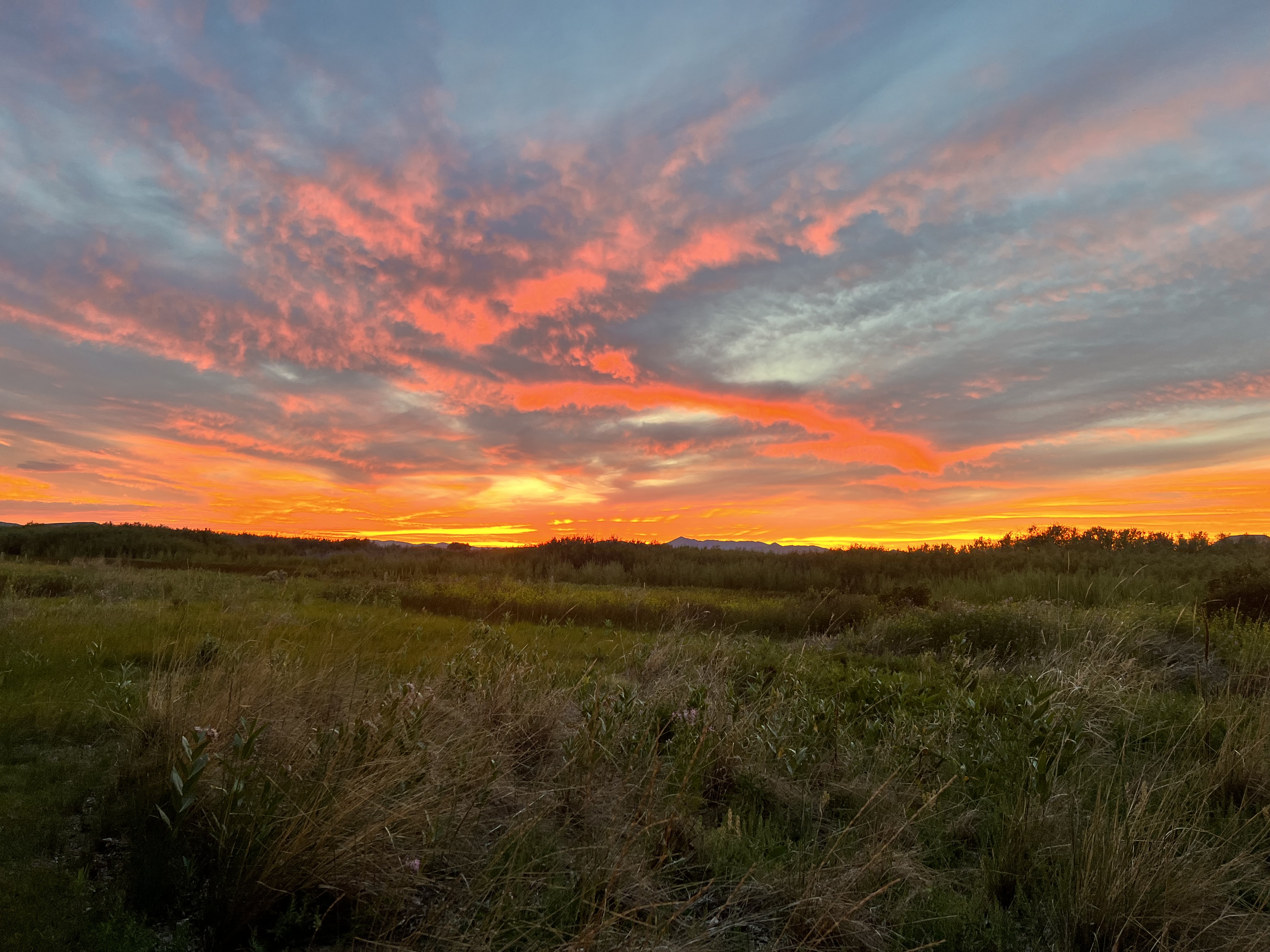
Park your LTV at the good private campground across the street or boondock at state access sites along the lower river, reached by signs for Silver Creek East or West. Grocery shopping is in Hailey.
Livingston, Montana
Nelson’s Spring Creek is one of three monumentally fun spring creeks around Livingston, Montana, a town on the Yellowstone River where scenes from the film A River Runs Through It were shot. These fish are not stocked. They come directly from Yellowstone and can be rainbow, brown, or cutthroat trout.
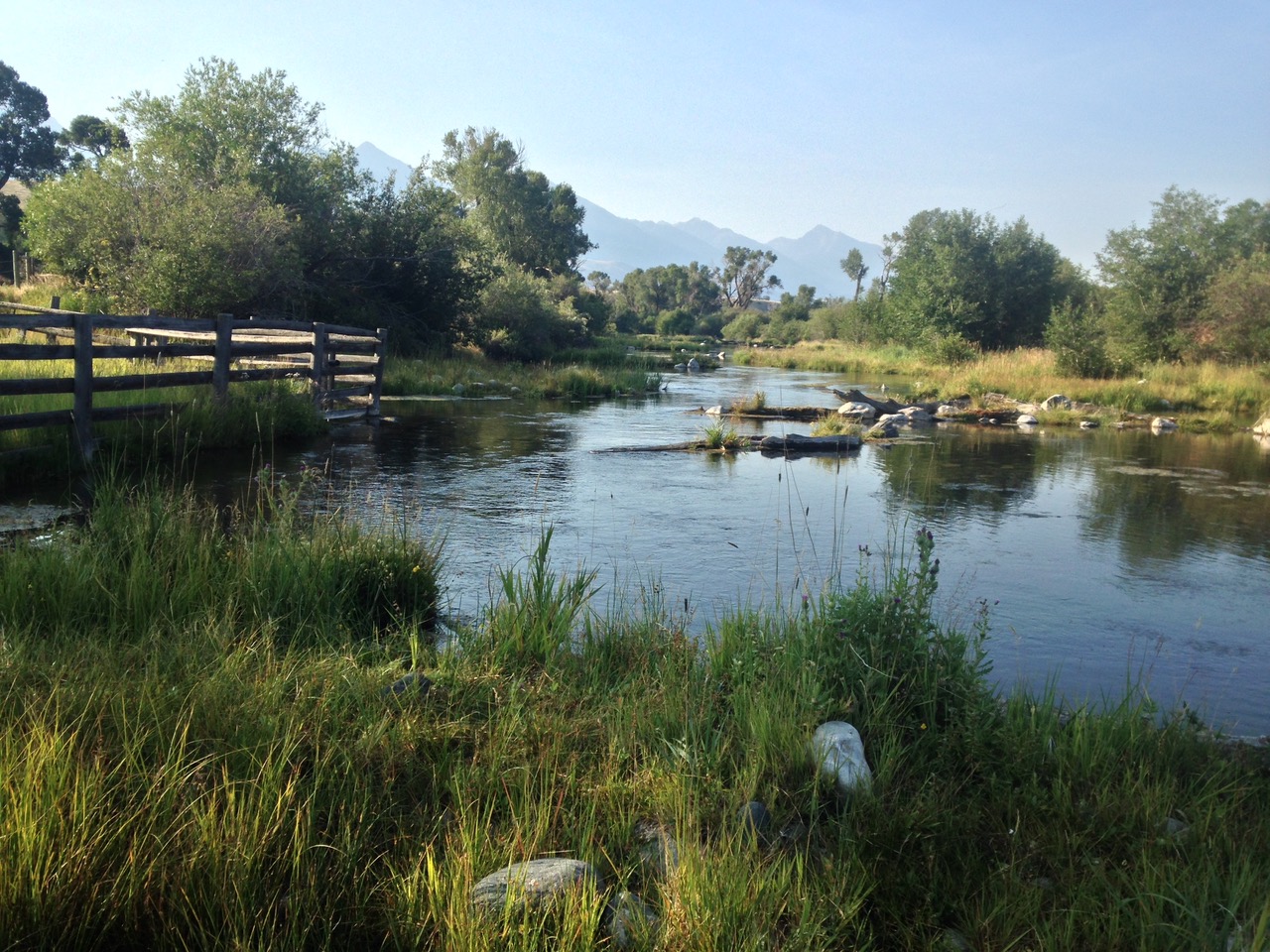
When I first came to Nelson’s Spring Creek Ranch in Montana’s Paradise Valley, the late Ed Nelson ran it. I entered the water around 8:00 am and didn’t come out until nightfall. My first fish? A measly 12-inches. I thought I drove 1,600 miles to catch this. The next, on a size 20 olive mayfly, was a 23-incher that catapulted out of the water so violently it startled me. That’s why I stayed in, proceeding to catch other similar-sized fish because I was patient. Yup, that word again.
In Montana, the rancher owns the land and the water that flows through it. It then becomes the other rancher’s water when it enters that land. That’s why Nelson’s can charge you for access and because the creek is smack in the middle of the ranch’s land. Six rods are allowed, but not six people. You can trade off anglers all day long, but only six rods. You’ll be using nymphs (underwater stage of the mayfly) plus dry flies (those float on the surface) in hook sizes from 14 to 20–come prepared. There’s an office where you or others can relax, buy flies, hire a guide, and book a room. Or, head to Livingston’s fly shops and another shopping downtown like one of my favorites, Bob’s Outdoor. Walk the streets, and you may see a movie star or two.
Next is the second creek that made Livingston one of the west’s hottest fishing destinations, Armstrong Spring Creek, on the O’Hair Ranch. Nelson’s and Armstrong’s are nearly across the Yellowstone River from each other. You’ll have 1.5 miles of stream to explore. The cost of entry varies by season, up to $120 a day in summer.
Just north of Armstrong, DePuy’s is another three miles of trout fun, allowing 16 rods daily. It is just as challenging, and prices vary by season from $80 to $120 per rod.
Cabins are available at Armstrong and Nelson’s, but if you’re in your LTV, there are great campgrounds along the Yellowstone like Mallard’s Rest, private ones like the Livingston KOA, and national forest campgrounds like Pine Creek high in the foothills of the Absarokas. If those are full, try in town.
Klamath River, California
This famed northern California stream is only going to get better. Four dams that have stopped salmon and steelhead from spawning for decades will be removed by 2025, opening 400 miles of spawning habitat alone. Considering that the Pacific salmon runs are in trouble everywhere, that’s a good thing.
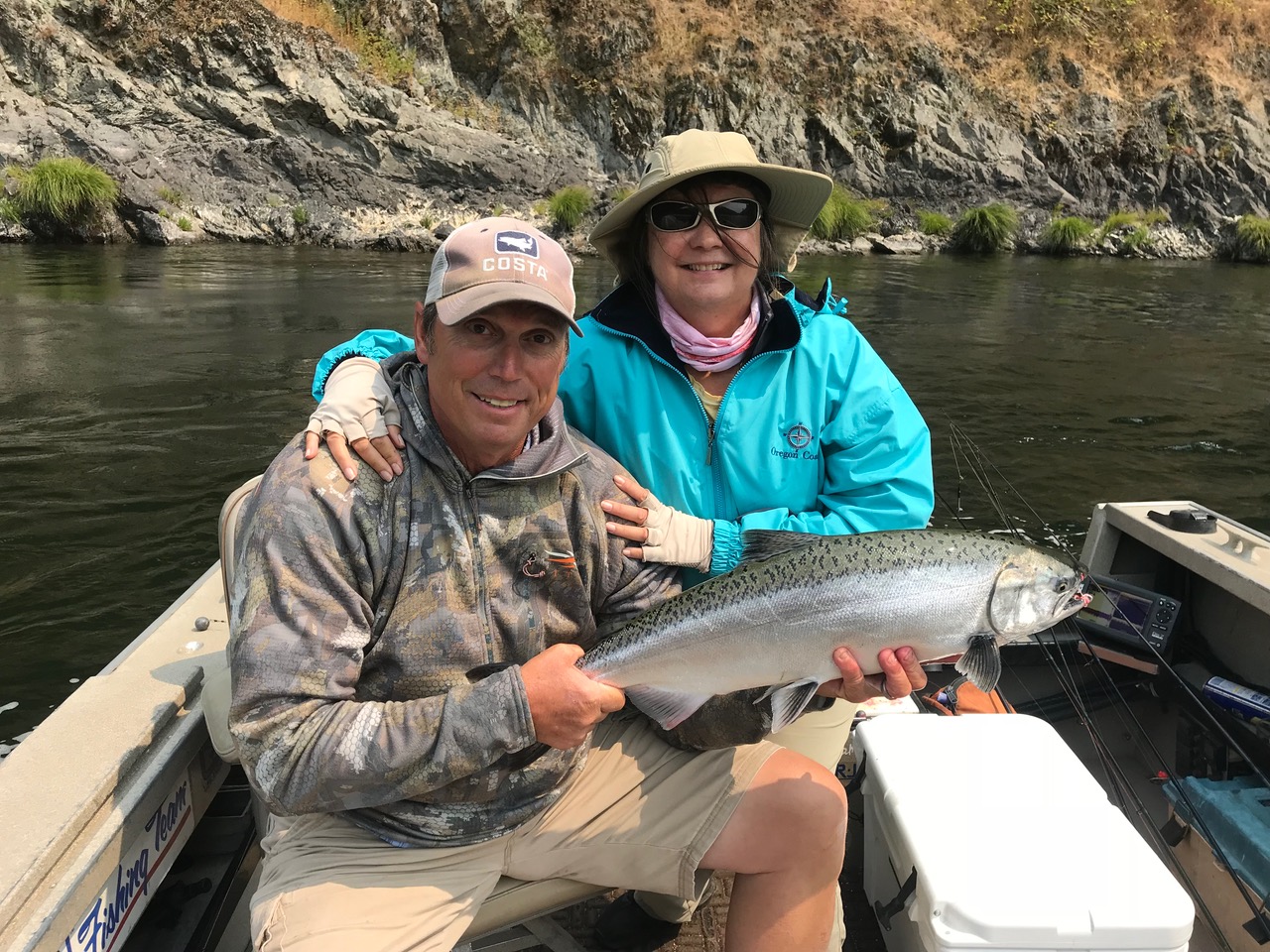
Hire a knowing river guide like Dave Jacobs (he’s familiar with several big fish rivers from the upper Sacramento and Feather rivers and more), and he’ll run you upstream to his favorite runs to pitch spawn at big coho, chinook and steelhead, lake or ocean-run rainbow trout. This is a classic western river flowing into the Pacific. Fast and clear. When you feel a bump, set the hook and hang on. It’s freight train time as the fish roars off upstream or down. Since both species are in danger, let them go to spawn. Steelies do not die after spawning.
Colorado River, Colorado
We can’t pass up the state’s namesake Colorado River.
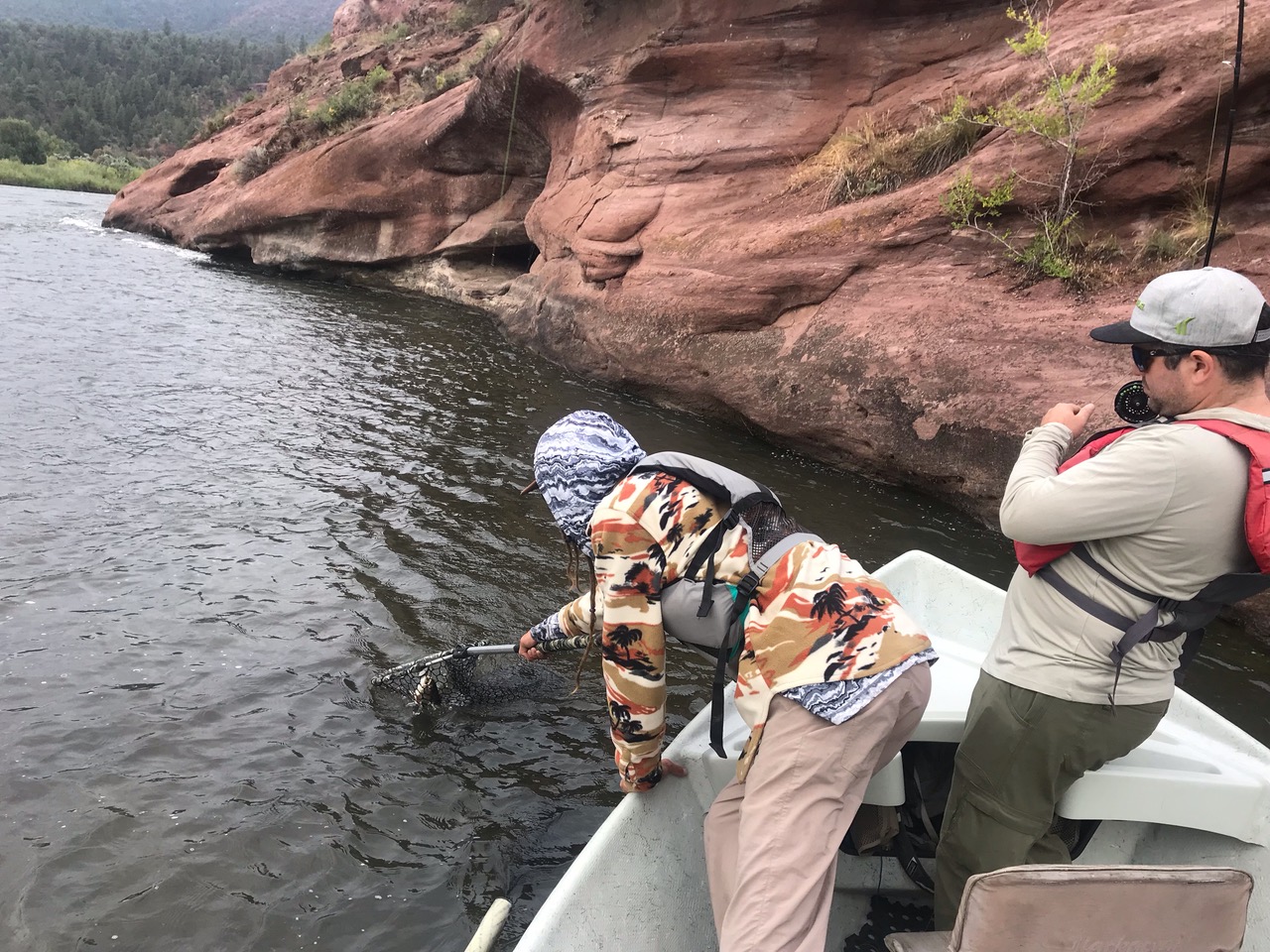
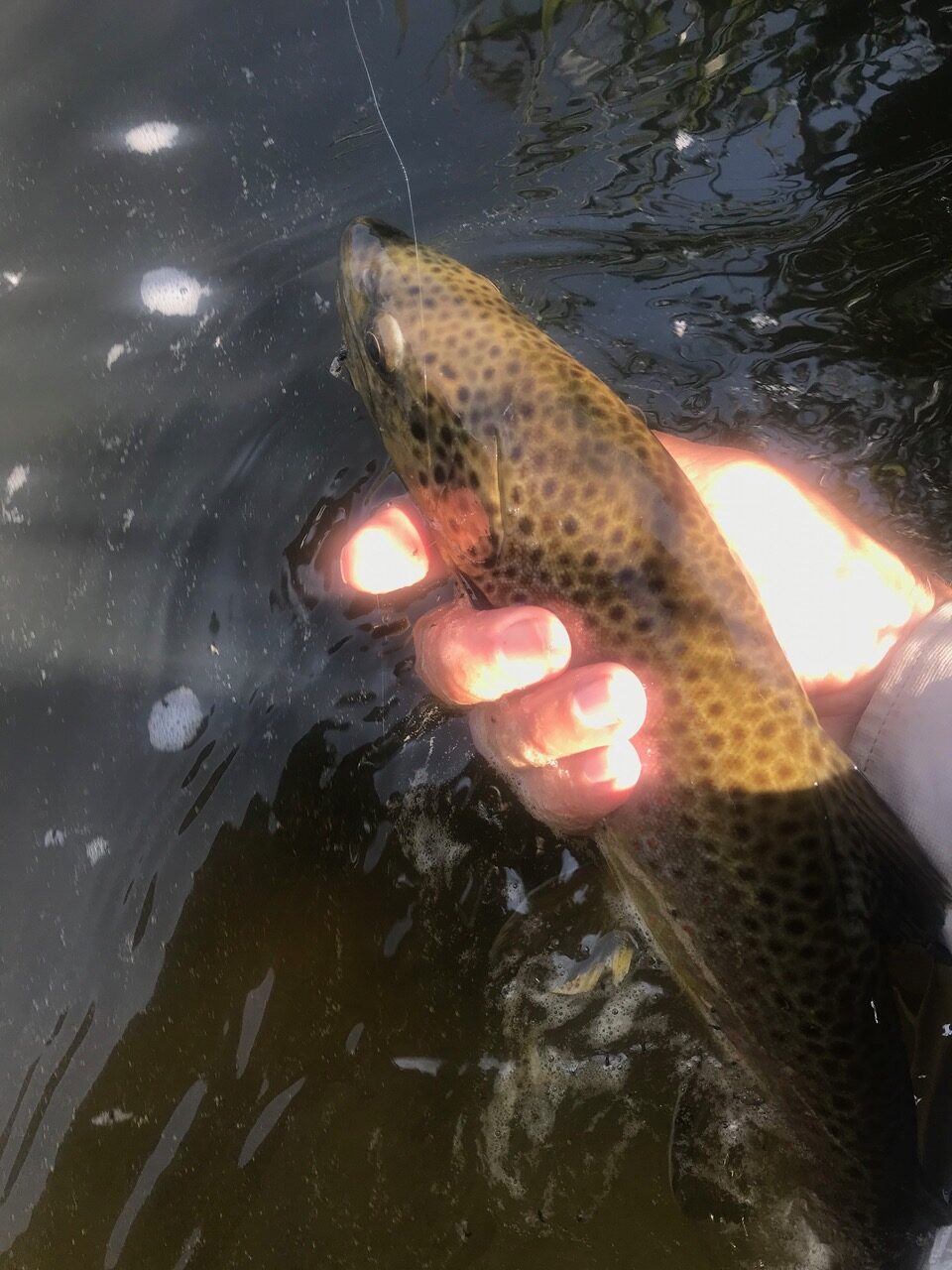
Rafters and anglers share the river in spots Granby, near Rocky Mountain National Park, several miles south to several takeout spots. Wade cautiously at spots like the Hot Sulphur Springs Joe Gerrans Unit, a former campground. Fish the undercut bank, not the river center. There are several other public accesses along U.S. 40. They’re also finicky and “educated.” Our guide told me to cast inches from a rock face on one float trip in another section. Up came a brown. I was amazed as it nudged my grasshopper imitation with its nose and, seemingly knowing it was fake, dove out of sight.
Miracle Mile X 2: Wyoming and Colorado
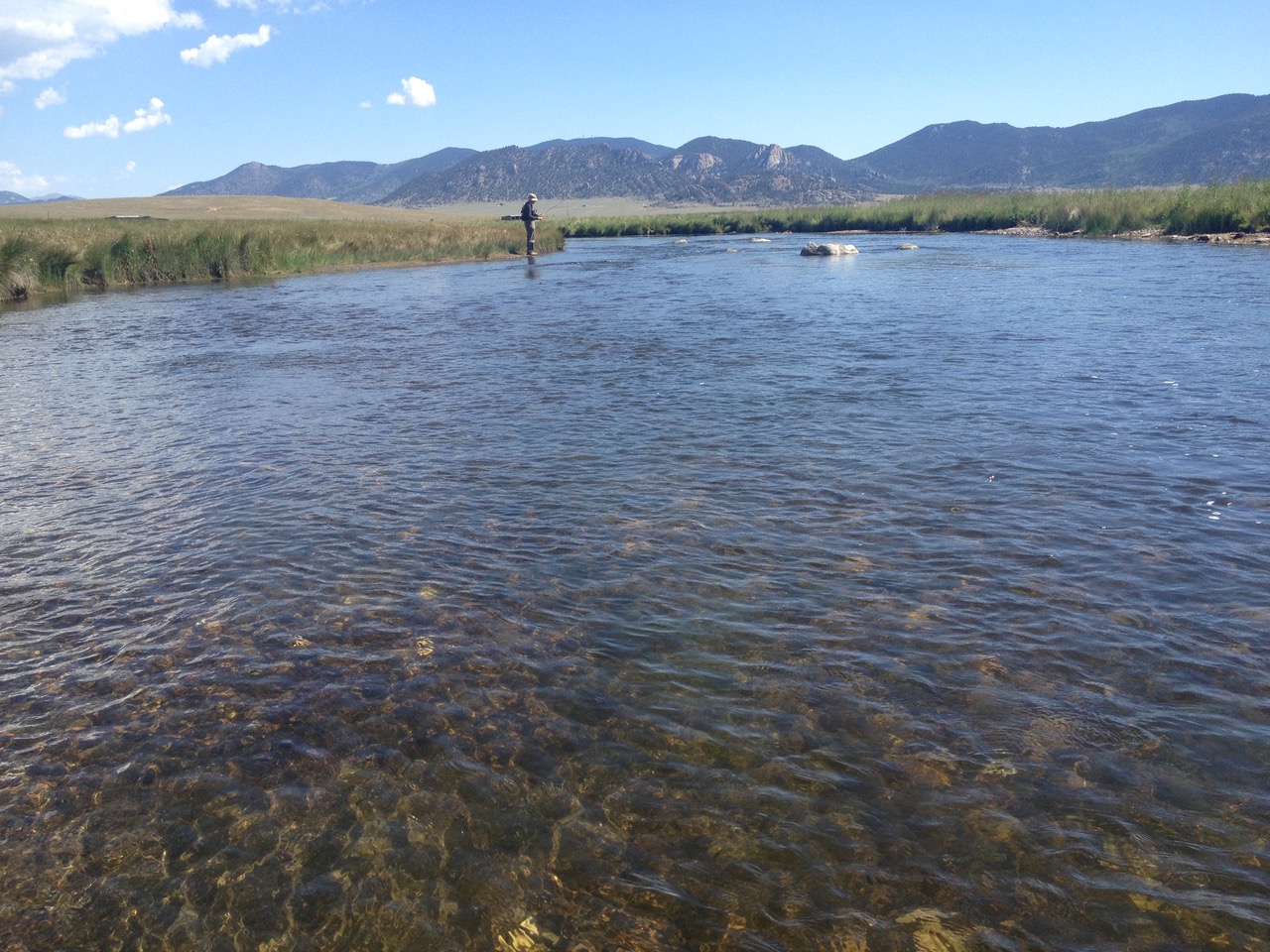
There are two sections of streams rightly called the Miracle Mile. They’re both on the Platte River, but one is on the North Platte, one on the South. One’s in Wyoming, the other in Colorado. The South Platte version, aka the “Dream Stream,” is reached west of Colorado Springs as it flows from Spinney Reservoir. Camping is nearby on Eleven Mile Reservoir.
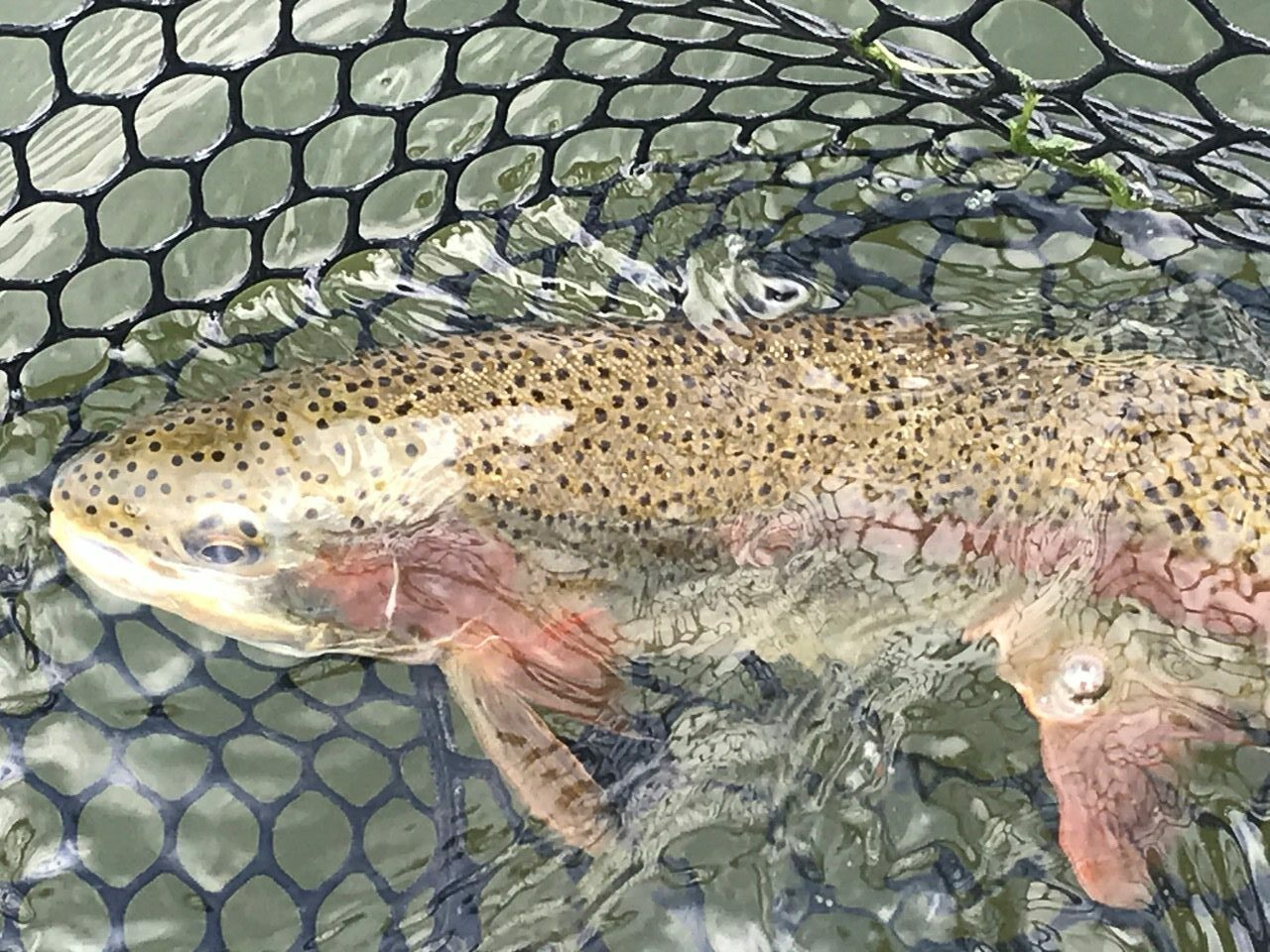
On the North Platte, guide services like Cowboy Drifters near Casper, Wyoming, will advise what stretch is best. Camping is available at river reservoirs and national forest access sites, including my favorite, Six Mile, bordering the Platte River Wilderness. Your guide service will have more.
Wyoming, Continued: Yellowstone National Park
For many anglers, nothing compares to fishing in America’s first national park. But where to go depends on the time of year. The upper Firehole is best in spring. Here, that means June. After July 15, the season opens on the Yellowstone River and spots like the Nez Perce Ford picnic area, where the wadable waters on this wide stream lure those after river cutthroat. Yellowstone cutthroat are threatened after someone illegally put lake trout into Yellowstone Lake, which promptly ate the native trout to the point of nearly wiping them out. The lake trout are slowly being removed, resulting in the start of a cutthroat comeback.

The Yellowstone outside the park, through Livingston especially, is also famous for its brown trout. Check-in Livingston at shops like The Yellowstone Angler and Dan Bailey’s, which has been there forever.
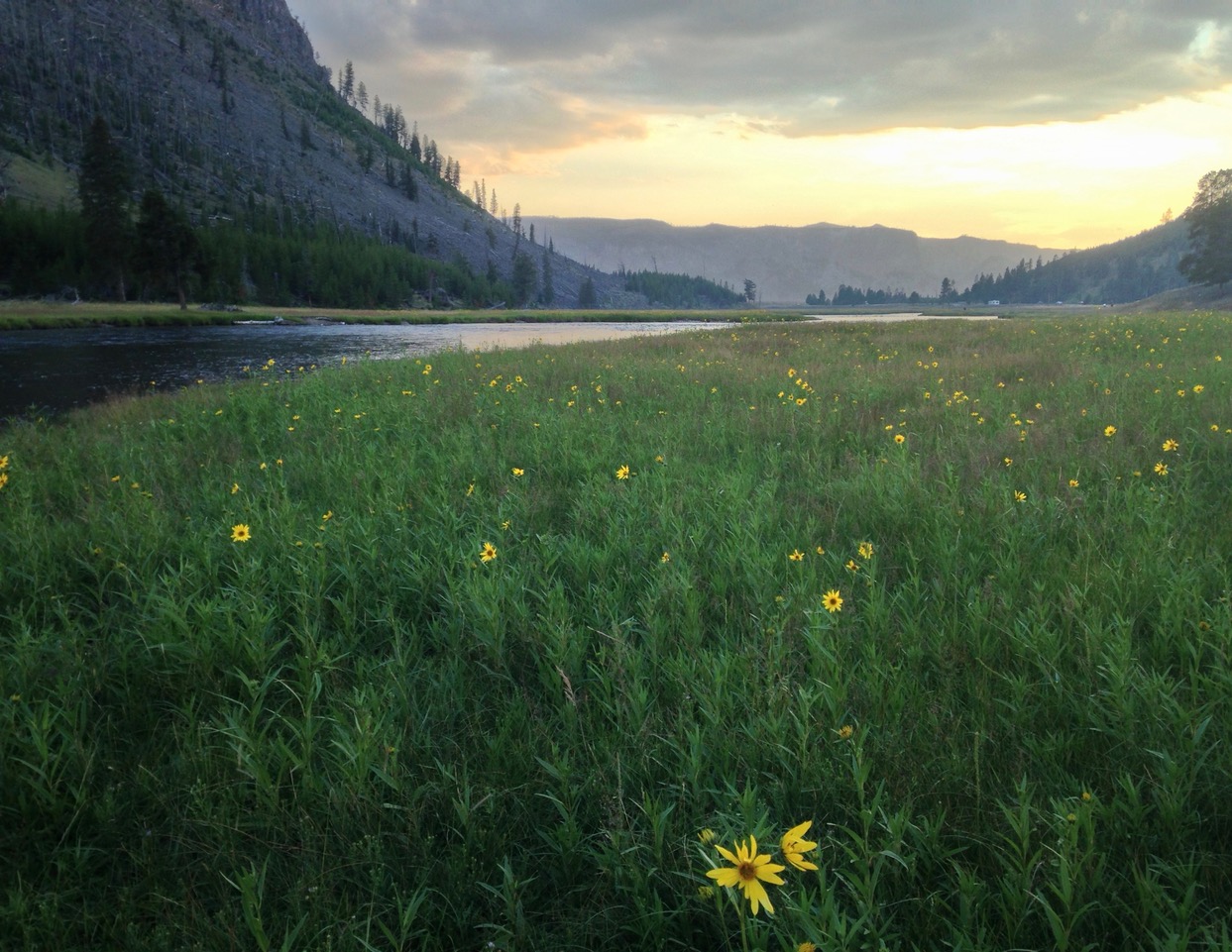
The Madison River is memorable outside the park below Quake Lake. Areas like Three Dollar Bridge are wadable, but most areas of this stretch known as the Fifty Mile Riffle are best from a boat. Check with Kelly Galloup at Galloup’s Slide Inn for guide service, riverside lodging and camping, and at several West Yellowstone shops. Of those, I like Arrick’s. In the park, it can be spectacular in fall as well. Camping is throughout the park and near West Yellowstone.
Big Horn River from Fort Smith, Montana

The Big Horn flows cold thanks to the design of the Yellowtail Dam, which draws water from the bottom, not the top of the reservoir. Fort Smith is the headquarters for most drift trips here, and the fishing can be spectacular. Most guides will use a “hopper/dropper” rig in later summer, with an underwater nymph on a length of line that allows a grasshopper imitation to float the surface. Be ready, as fish can hit either.
The Big Horn is where I earned my river and, according to our guide, Crow Indian name, Ghost Fisherman, after missing a monstrous fish that appeared and disappeared like a specter in the water. The river flows through Crow land. Camping is available at both private and federal campgrounds.
What’s your favorite? I’m sure I’ve missed many, like Clarks Fork of Yellowstone, the Beaverhead, the upper Missouri in Montana, and Rock Creek. I’ve also left out a few because they’re in trouble, in the opinion of many, due to overfishing and climate issues, like the Big Hole and Henrys Fork.
Next up, we’ll hit Canada and a few more coastal rivers.



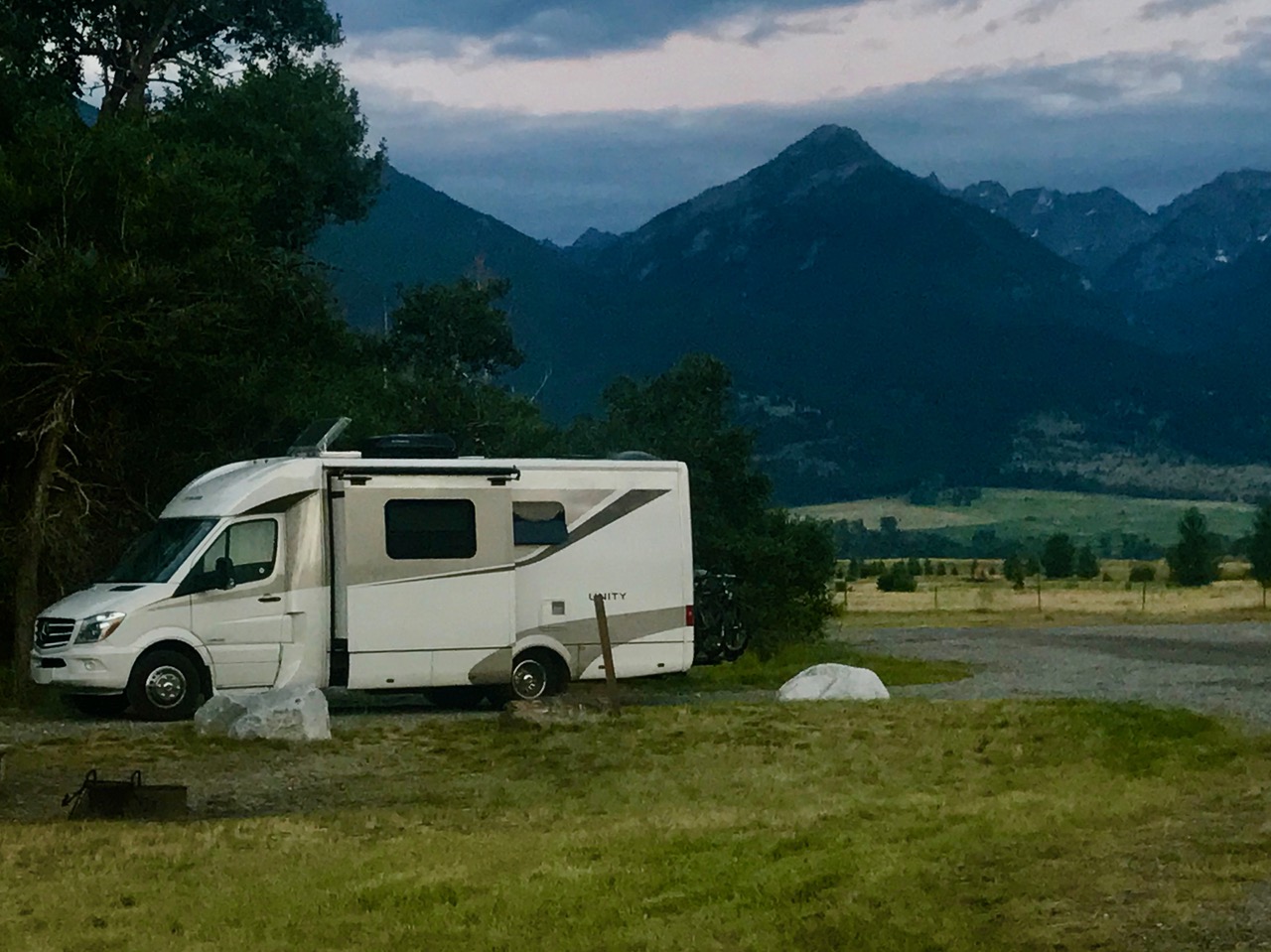
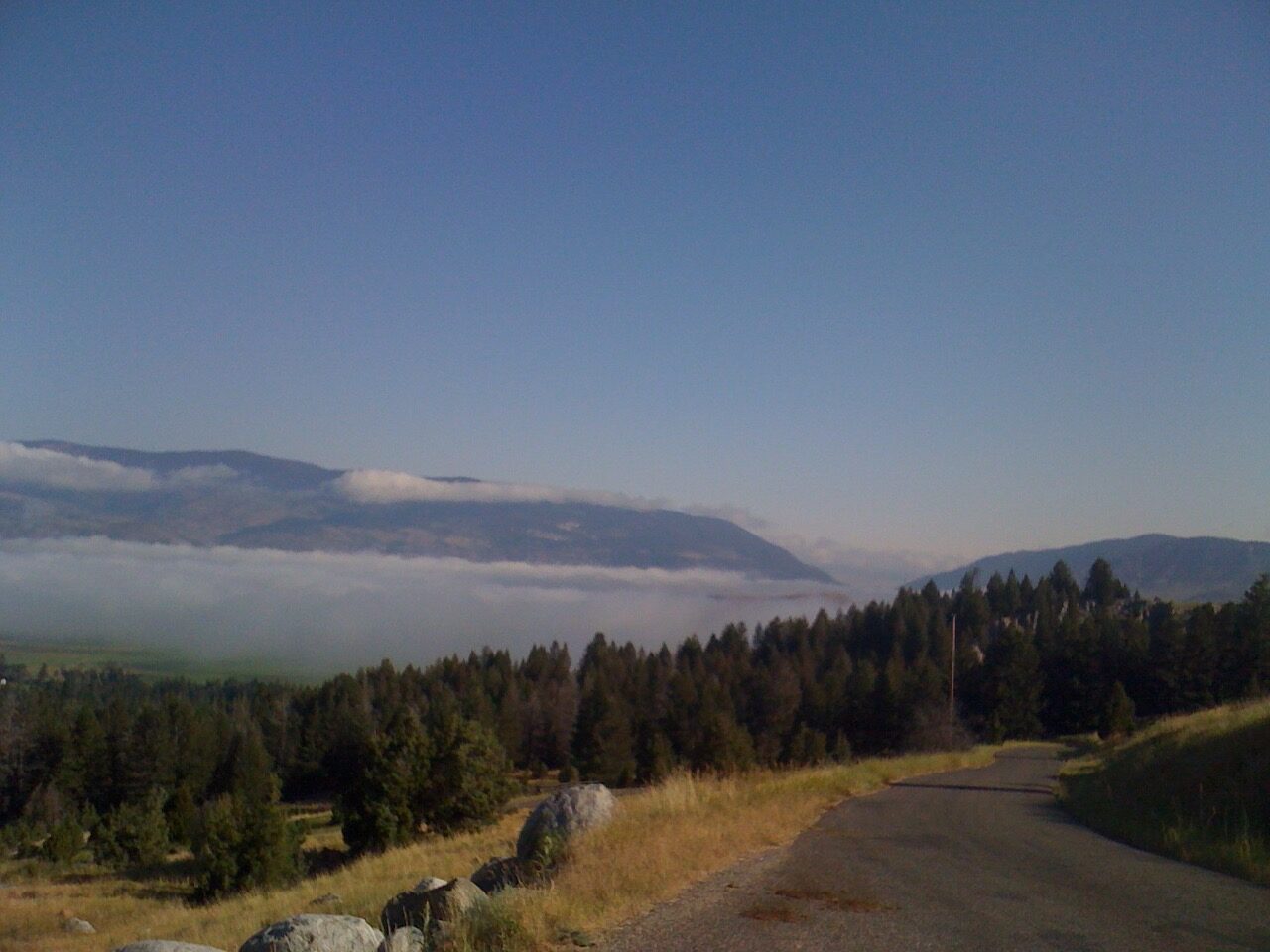



Comments